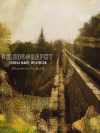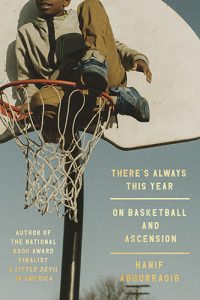Selenography
In his fifth book, Joshua Marie Wilkinson (in collaboration with photographer Tim Rutili) presents to us Polaroid photographs and poetry in gorgeous interplay. The text, broken into five poems/sections with words on the verso and images on the recto, is a fairly quick, very enjoyable read on the surface, but beyond the surface it achieves a brilliant complexity that haunts readers long after they put down the book.
In his fifth book, Joshua Marie Wilkinson (in collaboration with photographer Tim Rutili) presents to us Polaroid photographs and poetry in gorgeous interplay. The text, broken into five poems/sections with words on the verso and images on the recto, is a fairly quick, very enjoyable read on the surface, but beyond the surface it achieves a brilliant complexity that haunts readers long after they put down the book.
By coupling the visual and the written word, Wilkinson finds a surprising, quirky, and often touching avenue to bring us as close as we may be able to get to accurately experiencing and preserving a memory, a moment from a variety of angles at once.
Each page of poetry is compelling and refreshing; Selenography showcases vivid, evocative language, short lines, and skillful enjambment. The imagery is often simple, yet never benign:
I’ll collect you
backwards until the rain pulls your
coat open
tumbled laundry scents accumulate
in the children’s
guessing & their guessing gets sharper
In so few words, Wilkinson’s unvarnished images anchor spiraling impressions, and he manages to gentle a proclamation of love into three lines (“I’ll collect you / backwards until the rain pulls your // coat open”).
He rejects punctuation, which results in syntactical constructions of enjambment and run-ons that only add to the poems’ complexity, as well as to their rhythmic fluctuation (pause-then-rush).
an owl breaks the
fold a cut tree spills
a soft crutch
hits
this dust
a freezer stocked
with I
happened
to myself in these very woods
Such syncopated musicality is one of the many reasons Selenography is a must-read, read again, read again, and again. These hesitant rhythms enact the speakers’ uncertainty about language and wariness of his / her ability to preserve a self/moment/memory in poetry or other texts:
the stenographer’s
young assistant
sets up
the apparatus
while
the silver canister waits for
not light
might finish the
waltz if their drawings
of the dancers
could be looped into
the projector
In spite of the sometimes-cautious speakers, Selenography is also assertively playful and often surreal. Readers find themselves in strange and whimsical stories and worlds that aren’t always easy to make sense of, yet are always fascinating:
things keep watch
on
other things
shoelace for a
tripwire
a man
forms his
garage
from ice
while
his mastiffs loll in
snowfall your
plastic owl wants
a word
with
me
& I give it
one
Rutili’s photographs intensify this whimsy. The Polaroid accompanying the above text, for instance, is a shot from below of a giant Tyrannosaurus Rex statue with a bird perched on one of its front claws. Other photos are of bright white, unicorn-like horses, a black-and-white spotted dog, a woman’s legs in torn black stockings.
It is important to note that the poems in Selenography are not ekphrastic; that is, they are not written to be a direct mimesis of the photos with which they are juxtaposed. Instead, the words are meant to complement the photos; both genres are used in concert to create a more accurate description of a moment in all of its facets, just as a melody and its lyrics or a film and its script attempt to work together to reproduce character, emotion and story.
In “My Cautious Lantern,” for instance, we are presented with a photograph of a religious icon: bearded man in robes with a shepherd’s hook; below that, we see what seems to be a placard describing the statue, but the print is illegible so the identity of the figure is unclear. The statue appears to be displayed in a small alcove in a wall (possibly a church wall?), but on second or third glance the two-dimensional properties of the photo render it just as possible that we aren’t looking at a statue in an alcove at all, and the icon is simply painted on the wall, along with other images and designs (only portions of which have entered the margins of this photo). The text on the facing page reads:
we could smell the horse dung &
the longest grass in the world
still my
breath got
big
while a little
can of
milk I held stayed
cold somehow
death gets curious & starts
sniffing around our
luggage
allow st. valentine
an opening & a
softer architecture
Wilkinson’s most overt reference to the image is in the last stanza, where we can see possible connections between St. Valentine and architecture to the religious iconography in the photograph. As with all the other photos and “corresponding” texts in the book, readers now must fill in the gaps; we are asked to complete the story, to imagine relationships between the image – possibly a snapshot of a moment on vacation? – and the poem. We also, unavoidably, fill the gaps with our own connotations.
The surreal play of Wilkinson’s poems and Rutili’s photos hearken to our pasts; Polaroids in general are artifacts from former times, nearly obsolete in our current world of digital photography, and Selenography’s Polaroids in particular present to us washed-out colors, reminiscent of colors in snapshots from the late 1960s, 70s and 80s. The prints in this book show some wear: possible damage to the film, fingerprints on the photo while the film was processing, exposure to light and heat, etc. seem to cause certain deformities in the pictures – spots, fading, whorls, distortion. The distortion on many of the images resembles plants one might find deep under the sea or far inside a thick forest, which adds another layer to dreamlike moments in the book.
As readers begin to reminisce and make associations based on this throw-back media, it is difficult to overlook Selenography’s self-reflexivity. Wilkinson asks us to see that poetry and photography share a commonality in the way they cling to memory, story, and image; they represent our attempts to chart the surface of our world, how we hold it together and make sense of it, just as selenography (a branch of astronomy after which this book is titled) was a science that attempted to create a new language and assign names to man-made maps of the surface of the moon. But all of these attempts at representation can never completely signify the objects or moments they intend to capture because they are only marking surfaces (just as in film, song, audio, and many other types of record-keeping); thus, Wilkinson’s book becomes an incisive and compelling poetry of lack, loss, misdirection, and possible misinterpretation:
we are falling sparrow-aligned
useless against
even the slenderest breeze or apologies
we are built without tools or
recording devices without the
fat whoosh of the
woodchopper
without legends
of the legendary child thieves
there was
almost nothing before us or at
our feet yet
this spinning black set negates us
names us revokes
our calls
made
in the yard the light is a foil &
it stomps
us out like a wick until our
eavesdropping is what
stuns us
awake
As we read, we are reminded that although we may listen intensely, and although we try to be as accurate as possible, humans may not possess the ability to communicate and preserve ourselves and our memories through language or other media; it may even be impossible to do so through multigenre presentations/collaborations, such as the one presented to us in Selenography. But Wilkinson’s book is also proof that it is possible to create beautiful and affecting art in the attempt to record our fleeting world, even if that art is not indelible and can be as fragile as a Polaroid photograph, even if it doesn’t make the world indelible.
Selenography is an example of such art: a perfect marriage between the visual and the written word. The book is so stunning it could easily find a place as a coffee table book (a larger hardcover edition that would foreground even more the marriage between art and word).





